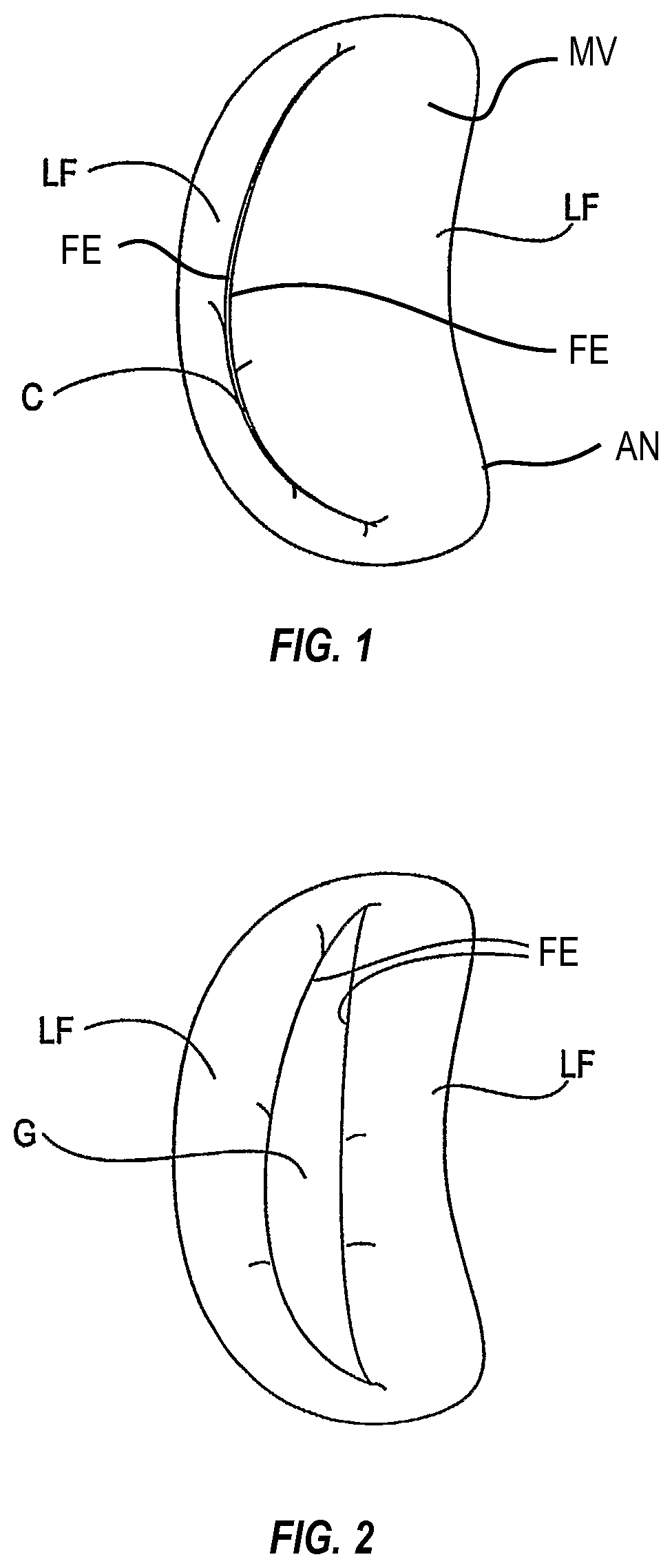Tissue grasping devices and related methods
a technology of tissue grasping and tissue, applied in the field of tissue grasping devices, can solve the problems of progressive heart failure, valve regurgitation, and affecting the patient's recovery, and achieve the effects of reducing the pumping efficiency of the heart, reducing the risk of severe heart failure, and reducing the risk of patients being rushed to hospital
- Summary
- Abstract
- Description
- Claims
- Application Information
AI Technical Summary
Benefits of technology
Problems solved by technology
Method used
Image
Examples
Embodiment Construction
I. Cardiac Physiology
[0026]As shown in FIG. 1, the mitral valve (MV) consists of a pair of leaflets (LF) having free edges (FE) which, in patients with normal heart structure and function, meet evenly to close along a line of coaption (C). The leaflets (LF) attach to the surrounding heart structure along an annular region called the annulus (AN). The free edges (FE) of the leaflets (LF) are secured to the lower portions of the left ventricle LV through chordae tendinae (or “chordae”). As the left ventricle of a heart contracts (which is called “systole”), blood flow from the left ventricle to the left atrium through the mitral valve (MV) (called “mitral regurgitation”) is usually prevented by the mitral valve. Regurgitation occurs when the valve leaflets do not close properly and allow leakage from the left ventricle into the left atrium. A number of heart structural defects can cause mitral regurgitation. FIG. 2 shows a mitral valve with a defect causing regurgitation through a gap...
PUM
 Login to View More
Login to View More Abstract
Description
Claims
Application Information
 Login to View More
Login to View More - R&D
- Intellectual Property
- Life Sciences
- Materials
- Tech Scout
- Unparalleled Data Quality
- Higher Quality Content
- 60% Fewer Hallucinations
Browse by: Latest US Patents, China's latest patents, Technical Efficacy Thesaurus, Application Domain, Technology Topic, Popular Technical Reports.
© 2025 PatSnap. All rights reserved.Legal|Privacy policy|Modern Slavery Act Transparency Statement|Sitemap|About US| Contact US: help@patsnap.com



